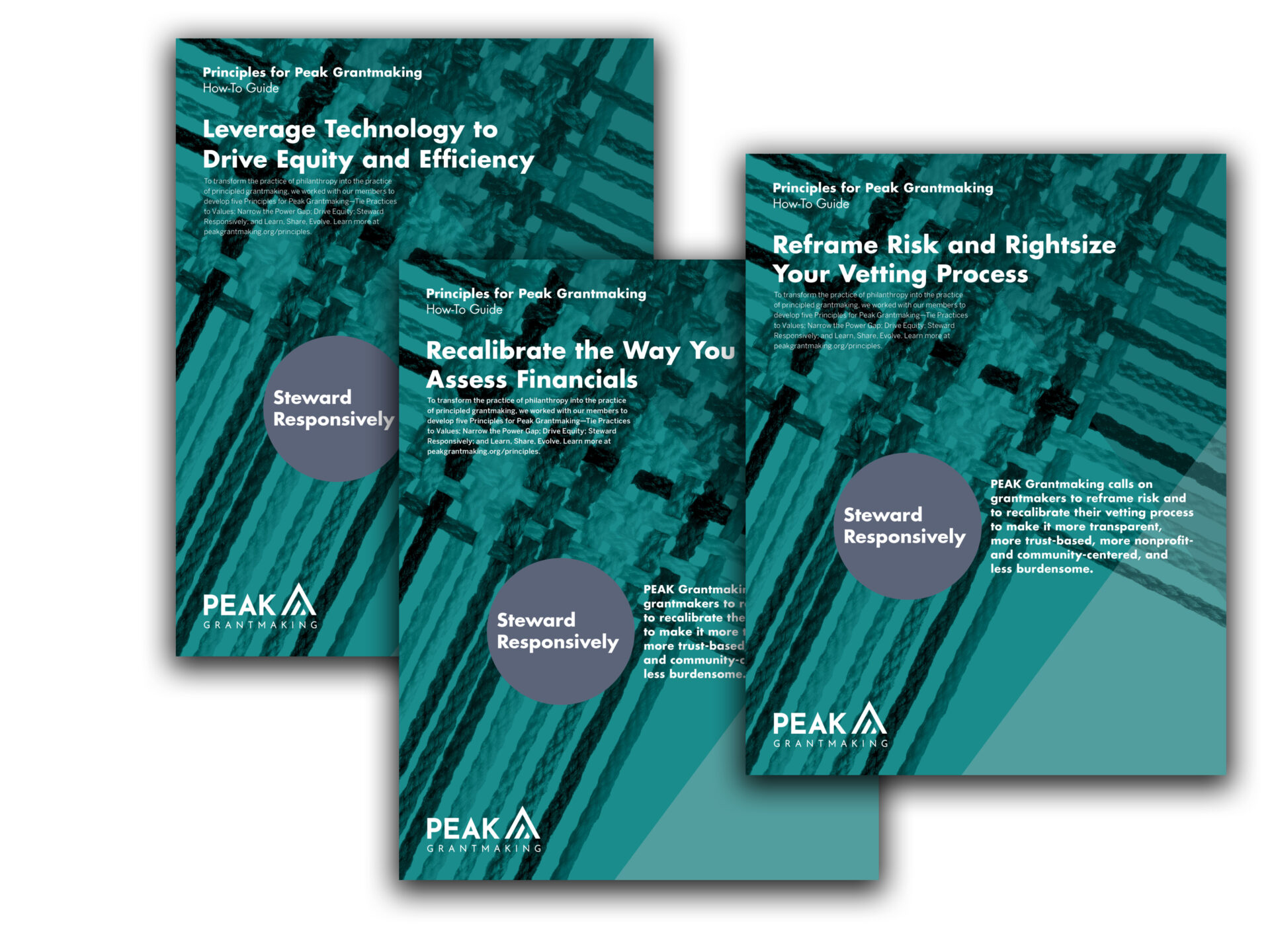Tax Code Details That Have a Big Impact on How You Evaluate Grant Proposals

In part one of this series, we examined how good due diligence can help your private foundation avoid incurring taxable expenditures from the Internal Revenue Service (IRS). We took a standard, hypothetical grant request—a $150,000 proposal from a local homeless shelter—and saw how seemingly small elements of the proposal could lead to big problems for the foundation. We looked at the risks of lobbying and of awarding grants to organizations that are not exempt under IRS code section 501(c)(3).
Here, we’ll consider a few other variables: What if the homeless shelter was run by volunteers and operated on a very small annual budget? Or what if the shelter was a government agency? Under these scenarios, additional due diligence practices can ensure you’ll have no problems with the IRS when awarding a grant.
“Tipping” concerns
One of your program officers stops by your office and explains that they really want to award a grant to a small homeless shelter that operates on a $50,000 annual budget and is mainly run by volunteers. The program officer wants to award a $150,000 grant to allow the organization to scale up its services, but they have heard that large grants relative to an organization’s total income might “tip” the organization into private foundation status, so the program officer is looking to you for guidance.
First, some background on how the IRS classifies 501(c)(3) organizations may be helpful. When an organization applies to the IRS for 501(c)(3) status, the IRS assumes that the organization is a private foundation—and therefore subject to the private foundation rules—unless the organization can prove that it is a public charity. For some organizations, this is an easy case to make: churches, schools, hospitals, state college endowments, and government entities each have special classifications under the Internal Revenue Code that establish their public charity status. But a whole host of organizations don’t fit into these special categories, including homeless shelters, museums, low-income housing organizations, and youth-serving organizations. To be classified as a public charity, organizations must not only prove that they are focused on a charitable purpose, but they also must prove that they receive financial support from a wide variety of donors. If they received all their financial support from, say, one wealthy family, it is easy to see why the IRS would want to classify that organization as a private foundation since that’s how most private foundations are established.
So, for these “publicly supported charities” (in the Internal Revenue Code, they are known as Section 170(b)(1)(A)(vi) organizations), they must prove to the IRS every year that they have a broad base of support from a wide variety of donors. They do this when they file their Form 990 each year, and you can see how an organization calculates its public support by reviewing Part II on Schedule A of the organization’s Form 990.
In order to pass the public support test required by the IRS, at least one-third—33 percent—of an organization’s revenue over the past five years needs to come from a wide variety of donors. Because it is important that financial support comes from a wide variety of donors, the IRS excludes from the calculation those individual or private foundation donors who have provided more than 2 percent of an organization’s total support over the past 5 years. Failing to meet this standard will cause the organization to “tip” into private foundation status and be subject to more strenuous rules.
Going back to our hypothetical situation, you tell your program officer that you need some more information. You need to know how much revenue the organization has earned during each of the past five years, how much of that revenue was from individuals or private foundations, and whether the organization expects similar support levels in the next several years. Unfortunately, small organizations typically don’t file the regular Form 990, so you or the program officer may need to follow up to get your questions adequately answered.
Let’s assume that, for each of the past five years, the organization received $50,000, $20,000 of which came from another private foundation. Because the private foundation support makes up more than 2 percent of the organization’s five-year total support, it is excluded from the public support calculation. So, based on these numbers, the organization has received $150,000 in public support over the past five years ($30,000 per year) and $250,000 in total support. If you divide the public support ($150,000) by the total support ($250,000), you determine that 60 percent came from public support over the past five years.
But now you need to determine if your proposed grant will cause the organization to fail the public support test for its current taxable year, assuming you will award your grant during its current taxable year. The organization expects that it will continue to receive $50,000 this year, $20,000 of which will be from the other private foundation. So, you now need to calculate how the addition of your grant will cause the organization to fail the public support test. Looking at the past five years, the public support is still $30,000 per year, but the total support will increase by $150,000 with your grant. So, if you take $150,000 in total public support ($30,000 for each of the past five years) and divide it by $400,000 in total support ($250,000 plus your $150,000 grant), you get 37.5 percent in public support. This is greater than one-third, so your grant will not cause the organization to fail the public support test. (Even if the organization failed the one-third public support test, it could still maintain its public charity status under the 10 percent facts and circumstances test, which we won’t get into in this article; but just know that another option exists.)
Grants to government agencies
Now let’s assume the homeless shelter is run by the city government and that the shelter has never filed anything with the IRS, so there is no determination letter to show that it is a 501(c)(3) organization.
Some private foundations require government agencies to obtain a 501(c)(3) determination before they award a grant, but such a requirement is not necessary. The Internal Revenue Code allows private foundations to award grants to a governmental entity as long as “the gift or contribution is made for exclusively public purposes.”
But not everything a government entity does is considered charitable in nature. For instance, when Amazon was looking to establish its second headquarters, many cities all over the country clamored to entice the company. Much of that work would likely not pass muster with the IRS as furthering exclusively public purposes. Usually, it’s easy for a private foundation to ensure a grant project exclusively furthers public purposes when evaluating a proposal—such as a proposal from a homeless shelter.
The foundation where I work has awarded several grants to city-run animal care and control agencies. The prevention of cruelty to animals is mentioned as one of the exempt purposes in Section 501(c)(3), so my foundation has no problem determining that these grants exclusively further public purposes.
Some grant proposals may present potential problems. But, as you can see, by doing some additional due diligence, a private foundation can determine whether a potential grant poses any unwanted tax consequences.



